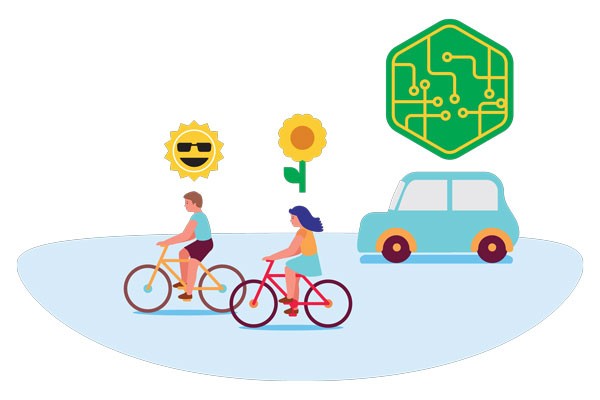By Howard Leff Source Weekly January 24 2018

Bend’s Mel Siegel knows more about self-driving cars than perhaps anyone else in town. He’s a Professor Emeritus at Carnegie Mellon University’s Robotics Institute in Pittsburgh—and an authority on the subject.
In honor of the transportation issue, Mel answered some questions about the future of ground transportation.
Source Weekly: How long will it take until most of us are out on the road in self-driving cars?
Mel Siegel: The average age of cars on the road in the U.S. is more than 10 years, meaning less than 10 percent are replaced annually. So, if starting tomorrow every new car sold were self-driving it would take five or six years. But they will not take over the market overnight, so I think 20 years might be a realistic answer.
SW: How will all this technology affect the average price of cars?
MS: The immediate effect of introducing more driving automation will be that the average cost of new cars will go up. But in the long run the cost of driving will go way down. First, the cars themselves will get cheaper as things like steering wheels, foot pedals and shift levers are no longer built in. Second, insurance and social costs will go down or disappear completely. In particular, costs for automobile accident injuries and collision repair will be reduced to almost nothing.
SW: Does this mean I can finally text and drive without feeling guilty?
MS: Guilt? About guilt you’ll have to ask your psychiatrist, not me. Seriously, the computer will be the driver. You will be just another passenger, and all passengers will be able to text away to their hearts’ content, completely guilt-free.
SW: How will these cars handle Bend’s unpredictable winter weather?
MS: Just like you did at first: very badly! But with accumulated experience, they will get better. And since all vehicles will share this experience, all will improve very quickly. Actually, I think a bigger problem than vehicle handling on ice and snow might turn out to be adapting to the invisibility of lane markings during these periods.
SW: What about traffic accidents?
MS: The expectation of everybody who works in the field is that the accident rate will be reduced to a tiny fraction of the rate we suffer with human drivers. Probably what you should rather be worrying about are the economic consequences of this vastly reduced accident rate: How many insurance companies, personal injury law firms and emergency rooms will be made “redundant” when the accident rate drops to 1 percent of its current rate?
SW: I never quite figured out Bend’s roundabouts. How will these cars navigate them?
MS: Better than you do! I think the key here will be to clearly convey to the vehicle’s computer how the traffic engineer who designed each roundabout intended each entry and exit combination to be negotiated. This will require better—and better standardized—lane markings, and probably also more informative signage at every roundabout approach.
SW: How can they help reduce traffic delays?
MS: There are many easy-to-imagine ways. The one I think most important will be in making high-speed small-gap tailgating safe on major highways—what the trucking business calls “platooning.” Increasing the number of vehicles in a lane-mile is all-around better than adding more lanes, which just make for more lanes of gridlock.
SW: Do potential hackers present safety concerns?
MS: No, real hackers present safety concerns. Surely the physical damage that a hacker can do by hijacking your vehicle is a more fundamental worry than is the financial damage he can do by hijacking your bank account. But what is the payoff to the hacker who hijacks your vehicle relative to the payoff to the hijacker who hacks your bank account? I’m more worried about the latter than the former—unless the hacker is not a crook but a terrorist. That’s a real risk, but no greater risk than exists for terror attacks on other elements of our public infrastructure.
SW: Is there anything else you would like to tell us about these cars?
MS: I agree with the researchers and strategists who believe that the shared-responsibility approach— where the car will drive itself 99 percent of the time and a passenger will take over during the 1 percent of the time that it doesn’t know what to do—is a very bad idea. I’m on the side of the community that believes the safest endpoint is the fully autonomous vehicle. The barrier that we will need to overcome will be how human-driven and autonomous vehicles will be able to share the road.
The original story can be found at https://www.bendsource.com/bend/hands-off/Content?oid=5044637